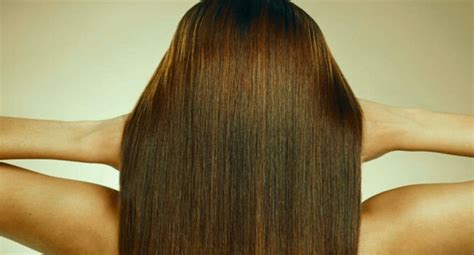Introduction

Deciding on a new hair color can be a daunting task, especially when there are countless shades and undertones to choose from. Finding the right color for your skin tone, eye color, and personal style can make all the difference in how you look and feel. This comprehensive guide will provide you with all the information you need to make an informed decision about your next hair color match.
The Science of Hair Color Matching
Hair color is determined by the amount of melanin, a pigment, in your hair follicles. There are two main types of melanin: eumelanin and pheomelanin. Eumelanin produces brown and black hair, while pheomelanin produces red and blonde hair. The ratio of these two pigments determines the shade of your hair.
Skin Tone and Hair Color Matching
- Fair Skin: Fair skin tones tend to have cool undertones, such as pink or blue. Warm hair colors, such as reds and golds, can help to create a more balanced look.
- Medium Skin: Medium skin tones have both cool and warm undertones. This versatility allows for a wide range of hair colors, including both warm and cool shades.
- Dark Skin: Dark skin tones have warm undertones, such as yellow or golden. Rich, dark hair colors, such as browns and blacks, can enhance the depth and warmth of your skin tone.
Eye Color and Hair Color Matching
- Brown Eyes: Brown eyes can complement a wide range of hair colors, from warm blondes to rich chocolates.
- Blue Eyes: Blue eyes are often complemented by cool hair colors, such as ash blondes or silver grays.
- Green Eyes: Green eyes can look striking with both warm and cool hair colors. Warm colors, such as auburn, can enhance the warmth of your eyes, while cool colors, such as icy blondes, can bring out the green tones.
- Hazel Eyes: Hazel eyes have a combination of brown and green pigments. They can complement a variety of hair colors, including both warm and cool shades.
Factors to Consider Before Changing Your Hair Color
- Current Hair Color: Your current hair color will influence the outcome of your new color. Bleaching or dyeing your hair multiple times can damage your hair and make it more difficult to achieve your desired shade.
- Hair Texture: Coarse hair tends to hold color longer than fine hair. This means that you may need to use a stronger developer or leave the color on for a longer period of time if you have coarse hair.
- Maintenance: Different hair colors require different levels of maintenance. For example, blonde hair tends to require more frequent touch-ups than darker colors.
- Lifestyle: Your lifestyle can impact the longevity of your hair color. For example, if you spend a lot of time in the sun or chlorine, your hair color may fade more quickly.
Professional Hair Color Matching
Consulting with a professional hair stylist can help you find the perfect hair color match for your individual needs. They can assess your skin tone, eye color, and hair texture to recommend the best shade and technique for your desired look.
Hair Color Match for Different Skin Tones and Eye Colors
| Skin Tone | Eye Color | Recommended Hair Colors |
|---|---|---|
| Fair | Blue | Ash blonde, silver gray |
| Fair | Brown | Warm blonde, gold |
| Medium | Blue | Cool blonde, ash blonde |
| Medium | Brown | Honey blonde, caramel |
| Dark | Blue | Ebony, deep brown |
| Dark | Brown | Chocolate, mahogany |
Cool Hair Colors for Blue Eyes
| Hair Color | Undertones |
|---|---|
| Platinum Blonde | Ashen, icy |
| Ash Blonde | Gray, blue |
| Silver Gray | Metallic, cool |
| Smoky Purple | Cool, muted |
| Navy Blue | Deep, rich |
Warm Hair Colors for Brown Eyes
| Hair Color | Undertones |
|---|---|
| Golden Blonde | Warm, yellow |
| Honey Blonde | Warm, golden |
| Copper | Reddish-orange, warm |
| Caramel | Brownish, warm |
| Chestnut | Dark brown, warm |
Hair Color Match for Different Hair Textures
| Hair Texture | Recommended Hair Colors |
|---|---|
| Fine Hair | Subtle highlights, lowlights |
| Coarse Hair | Rich, bold colors |
| Curly Hair | Warm, natural shades |
| Straight Hair | Cool, edgy shades |
FAQs
- Can I change my hair color at home? Yes, but it’s recommended to consult with a professional first to ensure the best results.
- How often should I touch up my hair color? The frequency of touch-ups will depend on the color you choose, your hair texture, and your lifestyle.
- Can I use hair dye on damaged hair? It’s not recommended to use hair dye on damaged hair, as it can further damage the hair.
- What are the different types of hair coloring techniques? There are various hair coloring techniques, such as balayage, ombré, and highlights.
- How can I maintain my hair color? Use color-safe shampoo and conditioner, avoid over-washing, and protect your hair from the sun and chlorine.
- What is the best hair color for my age? The best hair color for you will depend on your individual features and preferences.
- What are the latest hair color trends? Some popular hair color trends include copper, rose gold, and gray.
- What is the difference between warm and cool hair colors? Warm colors have yellow or orange undertones, while cool colors have blue or green undertones.
